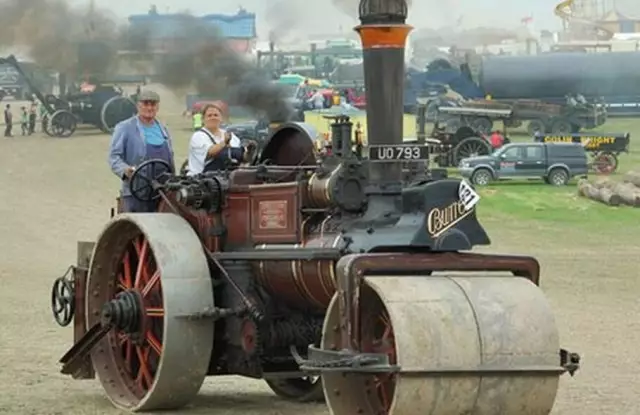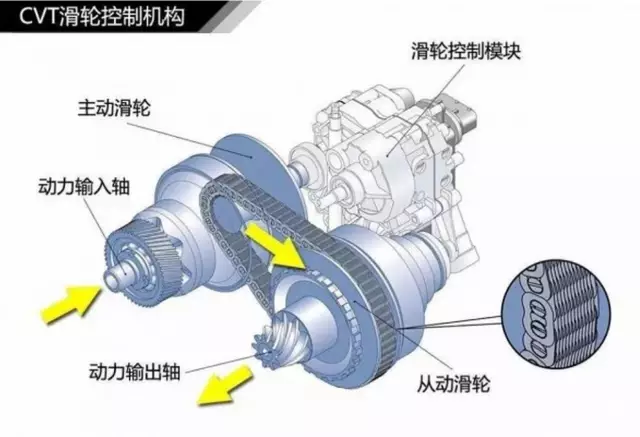There are a variety of current cars, and the principles of engines and gearboxes are varied. However, many technologies are based on the old technology of several decades ago. Car manufacturers now have very little improvement on engines and gearboxes, and the powertrain is not incapable of this aspect. developed? Isn't the engine much different from the current engine 30 years ago?
â–º From a purely technical point of view, traditional automotive powertrains (ie, internal combustion engines + transmissions) still have a lot of room for improvement, but in terms of automotive applications, there is indeed a bottleneck, especially when different means emerge. Terrorist opponent.
The development and decline of steam engines are the best examples.

In the era when only horses were motivated (animal power), the way to increase power was to breed better breeds and more scientific feeding and training methods. This is indeed effective, and the pedigree and management of horses are now extremely important. However, when the Industrial Revolution arrived, the rumbling steam engine relentlessly eliminated the horse.

After continuous improvement of the three stages of the primary stage, Watt improvement and high-pressure steam, the steam engine encountered problems of volume and efficiency, which laid the ground for the rise of the internal combustion engine. With the internal combustion engine gaining a firm foothold in commercialization (that is, Alto, Carl Benz, Daimler, Maybach, and the Deselren and others are familiar with the story), the steam engine is being kicked off by the market in the autumn wind, whether it is This is true for applications such as trains, ships or factory mines.

Can steam engines really fail to develop? of course not.
With the development of high temperature, high pressure and sealing materials, the steam engine can be further approached towards the Carnot theory cycle. Just like gas-steam turbines used in thermal power generation today, 21st century advanced technology has increased the efficiency of steam turbines to more than 60%. (We can search for supercritical thermal power units). Therefore, the steam engine has fallen for 100 years, but with the development of other technologies, the potential of external combustion engines such as steam engines can still be tapped.
In the same way, the internal combustion engine is also. For internal combustion engines, from the carburetor to single-point EFI, multi-point EFI, in-cylinder direct injection over the past 100 years, from fixed valves to variable valve timing, lift, from fixed phase ignition to electronic control The purpose of each technology is to make the combustion of the fuel in the cylinder more accurate.

The current engine has much room for improvement under ideal conditions. For example, the current gasoline engine direct injection technology has made great progress compared to the intake manifold injection, such as increasing the compression ratio and lean burning, but the combustion in the cylinder is still "chaotic" and is far from our ideal orderly combustion. The work that engineers have to do is also huge.
For example, the time of injection, the number of injections, the shape of the injection nozzle, the shape of the spray, the penetration depth, the size of the oil droplets, the scavenging time, eddy current or tumble flow, stratification or homogenization, the amount of EGR, etc. And our balance of hydrocarbon emissions, nitrogen oxides, fuel efficiency, and emissions from the internal combustion engine emission requirements will all drive a certain technical detail.
Therefore, the technical potential of internal combustion engines is great.

The same gearbox, in addition to today's familiar torque converter planetary gearset-based automatic transmission, dual-clutch transmission, CVT transmission, etc., there are still many kinds of exotic transmissions in the history. The essence of the transmission is to make the narrow engine power smooth and efficient into the driving force of the vehicle. The ideal model is a continuously adjustable state like the CVT.
If we have some breakthroughs in material science in the future, we can create a CVT transmission that can withstand huge power. It can not only slip (high efficiency) but also continuously adjust (smooth).

So, from a purely technical point of view, transmission powertrains are not a bottleneck. We have gone through 10, 20, and 30 years ago, and each era will feel bottlenecks. But with the breakthrough of new technologies, our current bottleneck may not be the same as in the past.
However, but
Just as a steam engine replaces a horse and an internal combustion engine replaces a steam engine, the replacement of an internal combustion engine must not be due to technology but to cost.
We don't really have to worry about oil being hollowed out, but as mining becomes more and more difficult and costs become higher and higher, it will eventually be expensive for us to afford. The relationship between the progress of all things and the cost is not linear. Individuals think that it is like a parabola in the reverse direction. The more difficult it is to raise it later, the higher the cost is. When the cost of technological improvements in internal combustion engines and gearboxes becomes higher and higher, their status is at stake.
Hydraulic Gear Pumps,Hydraulic Triple Gear Pumps,Smooth-Running Gear Pump,Simple Operation Gear Pump
Huai'an Youbang Hydraulic Machinery Co., Ltd. , https://www.yb-hydraulic.com
